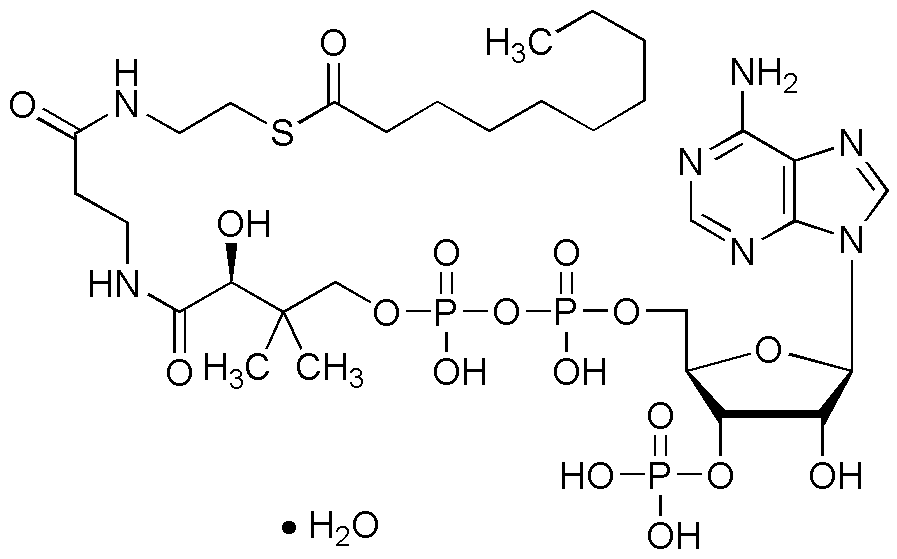Decanoyl coenzyme A monohydrate is widely utilized in research focused on:
- Metabolic Studies: This compound plays a crucial role in fatty acid metabolism, making it essential for researchers studying energy production and lipid biosynthesis in cells.
- Biochemical Pathways: It is used to investigate various biochemical pathways, particularly in the context of enzyme activity and regulation, helping scientists understand cellular processes better.
- Drug Development: In pharmaceutical research, it aids in the design and testing of new drugs targeting metabolic disorders, providing insights into how drugs interact with metabolic enzymes.
- Food Industry Applications: The compound is also explored for its potential in food technology, particularly in flavor enhancement and preservation, due to its fatty acid properties.
- Biotechnology: It is utilized in the development of biosensors and biocatalysts, which can improve the efficiency of biochemical reactions in industrial processes.
General Information
Properties
Safety and Regulations
Applications
Decanoyl coenzyme A monohydrate is widely utilized in research focused on:
- Metabolic Studies: This compound plays a crucial role in fatty acid metabolism, making it essential for researchers studying energy production and lipid biosynthesis in cells.
- Biochemical Pathways: It is used to investigate various biochemical pathways, particularly in the context of enzyme activity and regulation, helping scientists understand cellular processes better.
- Drug Development: In pharmaceutical research, it aids in the design and testing of new drugs targeting metabolic disorders, providing insights into how drugs interact with metabolic enzymes.
- Food Industry Applications: The compound is also explored for its potential in food technology, particularly in flavor enhancement and preservation, due to its fatty acid properties.
- Biotechnology: It is utilized in the development of biosensors and biocatalysts, which can improve the efficiency of biochemical reactions in industrial processes.
Documents
Safety Data Sheets (SDS)
The SDS provides comprehensive safety information on handling, storage, and disposal of the product.
Product Specification (PS)
The PS provides a comprehensive breakdown of the product’s properties, including chemical composition, physical state, purity, and storage requirements. It also details acceptable quality ranges and the product's intended applications.
Certificates of Analysis (COA)
Search for Certificates of Analysis (COA) by entering the products Lot Number. Lot and Batch Numbers can be found on a product’s label following the words ‘Lot’ or ‘Batch’.
*Catalog Number
*Lot Number
Certificates Of Origin (COO)
This COO confirms the country where the product was manufactured, and also details the materials and components used in it and whether it is derived from natural, synthetic, or other specific sources. This certificate may be required for customs, trade, and regulatory compliance.
*Catalog Number
*Lot Number
Safety Data Sheets (SDS)
The SDS provides comprehensive safety information on handling, storage, and disposal of the product.
DownloadProduct Specification (PS)
The PS provides a comprehensive breakdown of the product’s properties, including chemical composition, physical state, purity, and storage requirements. It also details acceptable quality ranges and the product's intended applications.
DownloadCertificates of Analysis (COA)
Search for Certificates of Analysis (COA) by entering the products Lot Number. Lot and Batch Numbers can be found on a product’s label following the words ‘Lot’ or ‘Batch’.
*Catalog Number
*Lot Number
Certificates Of Origin (COO)
This COO confirms the country where the product was manufactured, and also details the materials and components used in it and whether it is derived from natural, synthetic, or other specific sources. This certificate may be required for customs, trade, and regulatory compliance.


